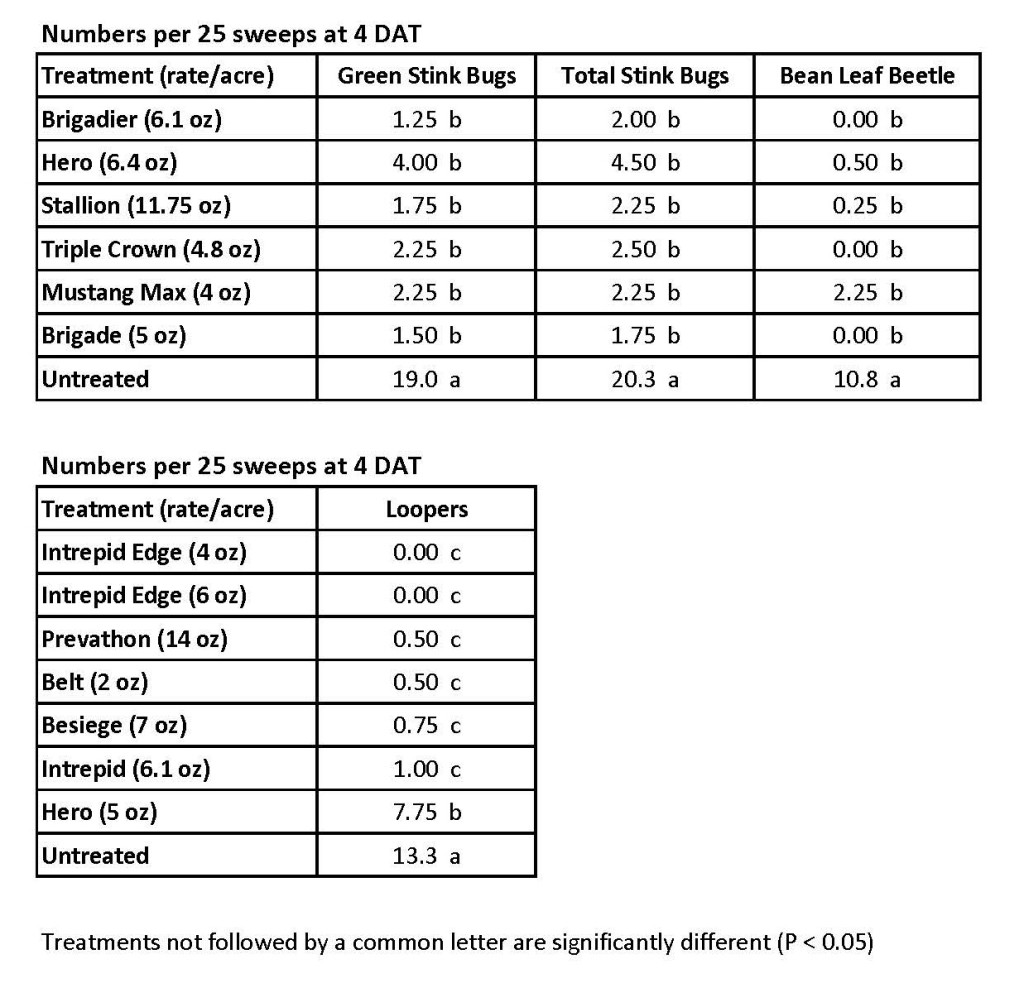It seems like a good time to make a few points using data that was collected today from insecticide efficacy trials done at the WTREC in Jackson. Although insect problems in soybean are not widespread, there continues to be a few reports of stink bugs, green cloverworm, and soybean loopers in some fields.
The green stink bug typically composes 90% of the stink bugs found in the average field. Fortunately, this insect is easily controlled with standard rates of most pyrethroid insecticides. As can be seen in the first table below, any pyrethroid insecticide or pre-mixed insecticide that contains a pyrethroid component provided good and similar control of stink bugs. These same insecticides will also do a good job of controlling green cloverworm and bean leaf beetles. I should mention that there are areas to our south where bean leaf beetles have developed resistance to the pyrethroid insecticides. However, I’ve not detected this in tests at Jackson or Milan.
In the second table (above), all the “go to” products for control of loopers did very well at reducing populations. Synthetic pyrethroids, represented by Hero in this test, did not provide adequate control. These are not big numbers, but had populations been higher, pyrethroid insecticides fail. Indeed, I’ve had tests where populations of soybean looper in plots treated with a pyrethroid insecticide rebound to levels higher than in untreated plots after 10-14 days. This occurs because beneficial insects are eliminated.
There are few morals to this story.
1) Chose insecticides and rates suitable to the pest(s) you are trying to control.
2) Be aware that a previous application of a pyrethroid insecticide increases your risk of late season soybean looper infestations. Thus, only make treatments as needed.
3) A tank-mix or pre-mix of insecticides will likely be needed if targeting infestations of both stink bugs and loopers. Typically, this means a pyrethroid insecticide plus one of the looper products listed in the second table.


